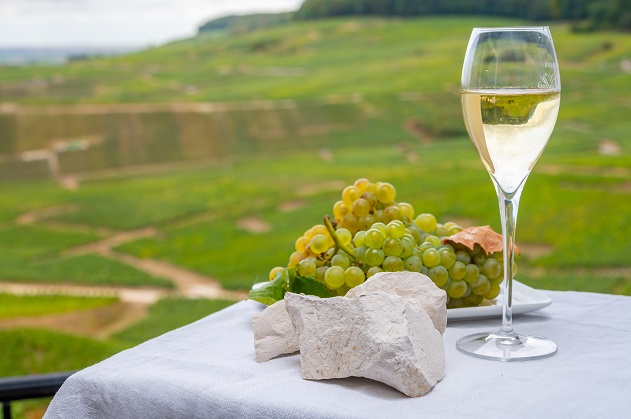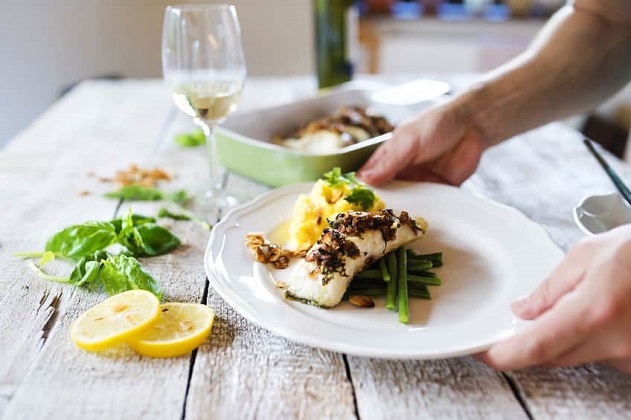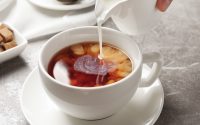Aromatic Elegance in a Glass: The Ultimate Guide to Chardonnay Wines
Whether you’re celebrating a special occasion or just unwinding from the day, a glass of wine can make your life better, they say. Wine has a rich history and tradition across many different cultures. This aromatic beverage takes a central role in celebrations of all kinds. It’s a great conversation starter and it has the ability to bring people together in moments of joy and pure happiness.
If you’re keen on tasting various white wines or simply want to expand your range of options and taste something other than red or rose, there is one particular white wine variety that is worthy of giving a try. Explore the wide selection of chardonnay wines made from the finest and most widely planted grapes in the world and discover the magic of captivating flavour profiles.
Origin and History of Chardonnay

Chardonnay originates from the Burgundy region of France and is believed to have ancient roots dating back to Middle Ages. Chardonnay vineyards spread across the globe as this grape variety is pretty adaptable to diverse climates and soil types. It’s easily one of the most popular white wines worldwide and is highly cherished for its versatility in flavour profile.
This white wine is cultivated across various regions of the world spreading from the USA, Chile and South Africa, to France, Spain, Australia and New Zealand. It is widely recognised as one of the most prominent and esteemed white grape varieties in the world. Each cultivating region contributes its own unique expressions of the rich complexity of the wine and offers the best chardonnay wines you can find.
Flavour Profile and Notable Characteristics
The brewing process can differ from region to region. Factors such as winemaking techniques, the terroir and the ageing process expand the range of different flavour profiles and notable characteristics.
However, one thing that most white wine lovers ask is “Is Chardonnay wine sweet or dry?”. Although chardonnay is typically considered a dry white wine, there can also be some sweetness to it. The dryness or sweetness level can vary depending on how the wine is made, where the grape is grown, and whether there is any residual sugar left in the finished wine.
Also, what’s sweet to some, may feel dry to others. Remember what they say “Different strokes for different folks”. However, here are some common flavour profiles you can distinguish when tasting chardonnay wine.
Fruit Flavours
Chardonnay can exhibit a spectrum of fruit flavours, ranging from citrus fruits, such as lemon and lime, to stone fruits like peach, apricot and nectarine. Also, some of the most prominent flavours you can taste in Chardonnay are flavours of crisp green apple and juicy pear.
Oak Influence
Chardonnay white wine is often aged in oak barrels which is what gives the distinct flavours and aromas to the wine. Oak ageing can give notes of vanilla, caramel and toasted nuts, as well as a creamy, buttery texture to the wine.
Creaminess and Texture
Chardonnay is specific for its luscious, full-bodied texture and creamy mouthfeel which can often be enhanced by malolactic fermentation and lees ageing.
Serving Temperatures
Generally, it is recommended to be served at temperatures between 7°C and 13°C. This temperature range is considered the ideal serving temperature. However, based on the chardonnay styles, unoaked variety is best served around 7°C to 10°C. Oaked or fuller-bodied Chardonnays are preferable at temperatures of 10°C and 13°C.
The slightly higher temperatures allow the oaked wine to develop more complexity and texture as it warms up in the glass. If you’re unsure of the specific style of your wine, the best is to store the wine at 13°C and allow it to warm up slightly in the glass. By doing so, you can strike a somewhat desired temperature balance where the wine is neither too cold, nor too warm.
Food Pairing Recommendations

Chardonay’s versatility in flavours makes it a great match for a wide range of dishes. For instance, a medium to full-body chardonnay with moderate acidity goes great with poultry such as roast chicken, turkey or duck. Chardonnay with crisp acidity and citrusy notes pair well with seafood dishes such as roasted fish, shrimp, lobster or crab cakes.
If you’re serving a chardonnay with subtle oak flavours, serve it alongside dishes with creamy sauces such as creamy mushroom risotto and chicken tetrazzini. Its rich flavour and versatility also pairs extremely well with pasta dishes, like fettuccine Alfredo, soft cheeses, roasted vegetables, Brussels sprouts and grilled meats.
How to Properly Store Your Chardonnay?
Store your Chardonnay wine in a cool environment where there are no significant fluctuations in the temperature. The best is to store it at temperatures between 7°C and 18°C, with 13°C being the ideal. Protect the bottle from direct sunlight. The best is to keep it in a dark place such as a cabinet or wine cellar.
Another important factor that contributes to proper storage is to minimise vibrations and movement around the bottles to prevent disturbing the sediment and ageing process. Also, make sure that the area where you keep the bottles has good air circulation to prevent musty odours or mould growth.
Is It OK to Drink Old Chardonnay?
It is generally safe to drink an old chardonnay because it does not contain any bacteria that might have harmful effects on one’s health. Whether you should try an old bottle of wine mostly depends on personal preferences and the style of the wine. Not all styles are meant to age, some are better enjoyed young and fresh such as unoaked or lightly oaked chardonnays.



